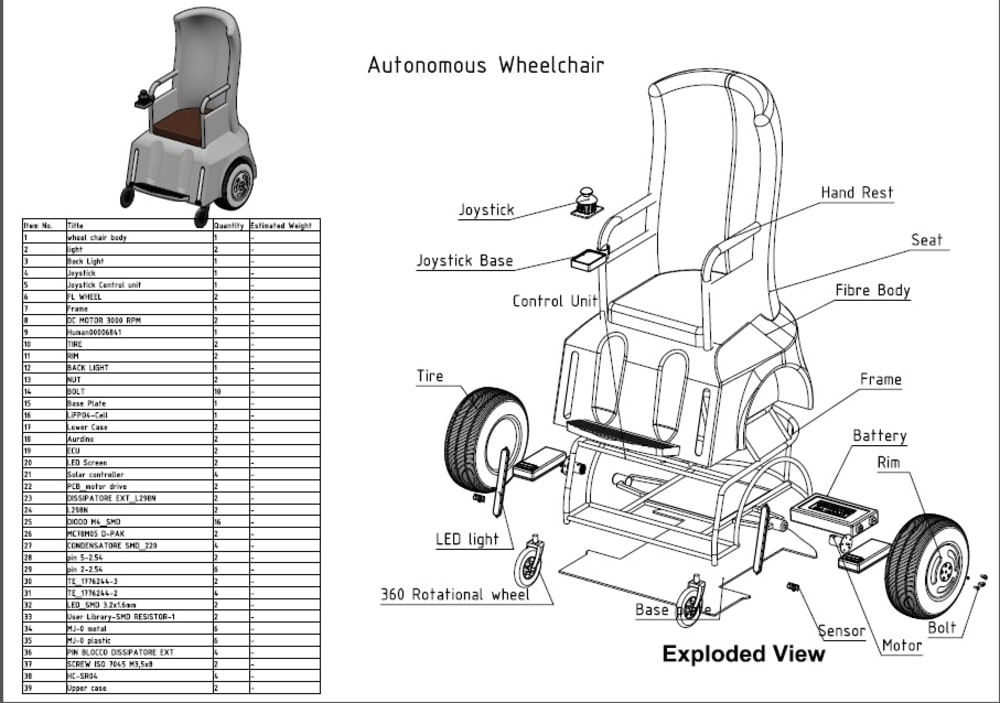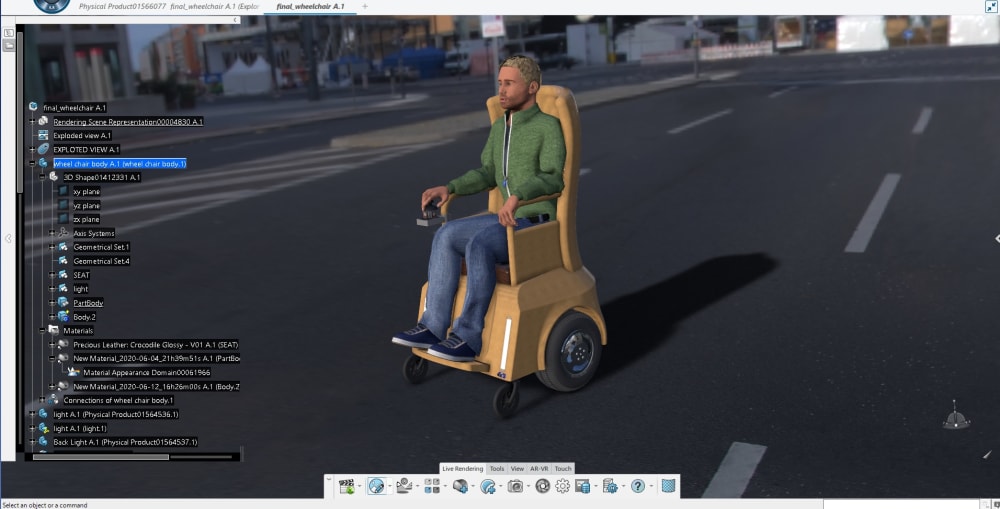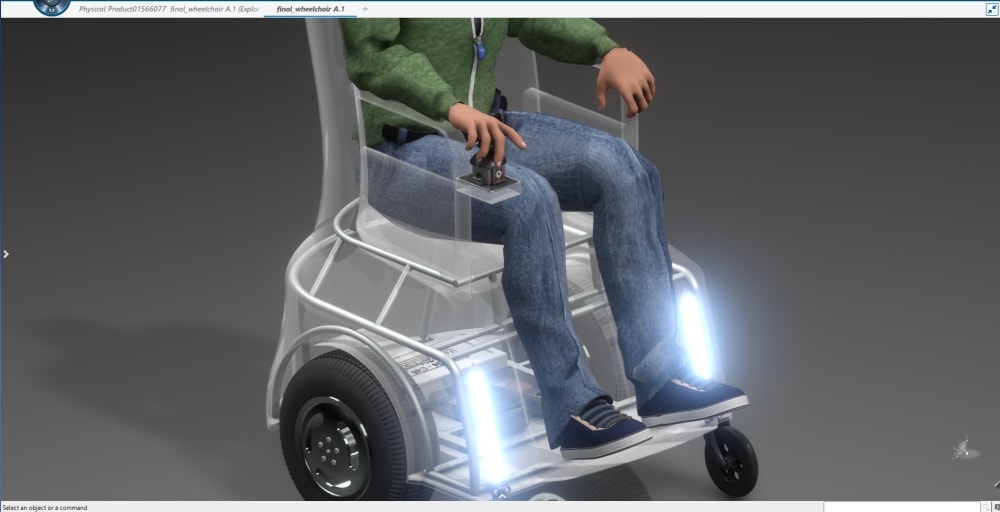A) Problem Statement:
The world is facing a major crisis to handle COVID-19, considering following key problems of our society:
- Worldwide pandemic
- Exponential spread & growth of COVID-19 positive cases, deaths and its fear & absolute halt of economic growth
- Maintain social distancing
- High demand for medical equipment in bulk quantity & crisis of its availability to handle the situation
- Additionally need of wheelchair for every patient visiting the hospital with or without COVID-19 – old aged people, handicapped, people needed assistance.
India and world need equipment which will aid medical systems to make it efficient, low cost solution faster & automated equipment with safety and importantly to maintain social distancing, so I innovated to design and manufacture this wheelchair.
B) Innovative Solution of Wheelchair:
- Key Features
- Wheelchair designed for usage at hospital/dispensary/COVID centers
- Semi-automated wheelchair driven with joystick
- Embedded mechanism to climb wheelchairs automated on stairs
- Automated obstacle detection
- Portable
- Lightweight design with no welding. Standard tubes are used to bolt and assemble.
- IOT based alert system for location
- Ultrasonic sensor based braking system with Arduino
- IOT based alert for safety -- alert to family/medical staff when collision
- Electric battery operated wheelchair
- Option to charge battery with solar
- 20 hours endurance per battery charge with minimum 10 KMPH
C) Stages/Methodology adopted in design & life cycle of wheelchair:
- Stage-I: Concept of Model Based System Engineering (MBSE) followed:
- carried system approach Requirement Management, Functional Analysis Logical Analysis and then Physical Design
- Innovative features are included in design as listed above in key features.
- We studied requirement of hospital for wheel chair, their challenges of hospital staff, outdoor and indoor patients
- Carried benchmarking of similar products
- Developed ‘Make or Buy’ strategy on sub-systems, components & supply chain
- And then finalised features and function iteratively
- Stage-II: Product Technical Specification at glimpse finalised:
- Weight of Wheelchair: 25 Kg
- Weight Wheelchair can hold: 90 Kg
- DC Motor: 400 W, 3000 RPM
- Battery: 12V, 600Ah
- Discharging Time: 20 Hour after full charge
- Maximum Speed: 35 Km/h
- Minimum Speed: 10 Km/h
- Charging time: 5 Hour from 0% to 100%
- Others: IOT, Joystick, mechanism for climbing, Braking system, safety
- Stage-III: Product Design – Using various apps of CATIA
- Designed various mechanical components of wheelchairs – Tire, Hand rest, Frame, Wheels, seat, Joystick, braking systems, Rim, Back rest, stair climbing mechanism, fasteners etc. and developed 3D CAD model
- Also designed electrical sub-systems – LED light, Battery, Motors, charging point, controller, sensors
- Parametric & Features based design is carried
- Bill of materials preparation & drawing for manufacturing
- Rendering of product and its parts/subsystems along with material assignment
- It was very complex to design product with intended objectives.
Like this entry?
-
About the Entrant
- Name:Abhinav Kumar Sah
- Type of entry:individual
- Software used for this entry:3D Experience platform by Dassault Systems
- Patent status:none








